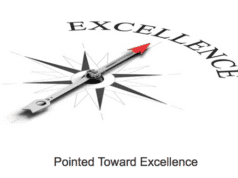 Mark's note: Liz Guthridge has been a previous guest blogger and you can view a short introductory video with her here.
Mark's note: Liz Guthridge has been a previous guest blogger and you can view a short introductory video with her here.
Today's post, like most of her work, focuses on the concept of “Lean Communications,” hope you enjoy:
Do You Get What I'm Saying?
English is the language of business. Yet how well do you speak and write English that others understand?
The variances in English are vast, depending on where you live, your country of origin, and your interests. For example, do you eat submarine, grinder, hoagie, or po' boy sandwiches? Do you drink still or flat water? Do you write 30 June or June 30? Regional idioms, slang and other points of reference pepper our language.
When we're communicating at work, we have an added complexity: colliding courses of action.
On the one hand, we experts say you should tell stories as much as possible to get your messages across effectively. Stories are a compact way to communicate vividly, practically and persuasively. You can quickly capture people's attention, illustrate abstract principles in action, and appeal to emotions, as I wrote in the March issue of The LEAN COMMUNICATOR.
The vivid language can trip people though. For example, this past spring during the volcanic ash flight disruptions, a blogger wrote about how a local speaker pinch hit for the featured expert from the UK at a California-based conference.
As a baseball lover, I immediately knew the sports reference. But the affected VAV (victim of volcanic ash) was clueless, as well as others who've never heard about a player officially entering a game offensively for another individual.
On the other hand, this is where the proponents of “Intercultural English” come into play. As advocated by G2nd Systems, they say we should view English not as a national language, but as a business tool.
Rather than just putting words together, we need to be much more aware of our communication style. We need to use phrases, terms, and concepts that are neutral rather than steeped in specific cultures. We also should avoid three letter acronyms, such as VAV from above, that people may not know. As a result, we'll be more inclusive, which people will appreciate. Plus, they'll understand us better.
While that's noble, it also can be boring, stripping language to the most common and dullest denominator.
So what to do?
- Be audience-centric in your communications, which is a very lean thing to do. Of course, this is easier if you're speaking one-on-one or communicating with a small group. You're more than likely to know their background and can choose words, analogies, and references that will resonate with them.
- In your stories, punctuate the point. Emphasize the punchline, not the reference, which may be obscure. As an example, talk about the challenges of being the person or firm that no one respects, rather than being the Rodney Dangerfield of your business. (I admit I've sent several people to Wikipedia to learn about this self-deprecating American comedian who's now been dead almost six years. Enough!)
- Test for understanding. Ask if people get it. (That's actually another faux pas because the phrase “get it” is very colloquial and casual.) Check in to make sure people understand what you're saying. Also confirm that they know what you're asking them to do, if you need them to take action. You also can ask how they would explain it, which allows you to determine how well you are communicating with each other.
As the US truckers, say 10-10. That's transmission completed, standing by.
What do you say?
About Liz Guthridge (full bio): Liz Guthridge is a seasoned, results-oriented consultant with diverse change management and communication experience. She excels in doing more with less to get great results.
Liz has more than 25 years experience in helping clients across a variety of industries. She writes and speaks frequently on change and communication issues, including LEAN COMMUNICATIONSâ„¢. Her former client Kathryn McKee and Liz are co-authors of the book, Leading People Through Disasters: An Action Guide: Preparing for and Dealing with the Human Side of Crises.
Before starting Connect Consulting Group, Liz was a principal with the consulting firms of Mercer Delta, Mercer HR Consulting, Towers Perrin and The Adobe Group. She also worked for Hewitt Associates as a consultant and Amoco (now BP) as a writer and editor.
She holds an MA in communication management from the University of Southern California, Annenberg School for Communication; an MBA from the University of Connecticut; and a BSJ in journalism from Northwestern University, the Medill School of Journalism.
|
|||||
| Liz Guthridge is a seasoned, results-oriented consultant with diverse change management and communication experience. She excels in doing more with less to get great results.Her clients value her listening skills, focus on the customer, practical ideas, personalized approach, flexibility, and her bias toward action and outcomes. Her other strengths include identifying the critical path to follow and getting buy-in, translating jargon into plain, compelling language to create a clear direction to follow, and building commitment. She also works with leaders on how to improve their credibility, increase organizational trust, and accelerate culture change.
Liz has more than 25 years experience in helping clients across a variety of industries. She writes and speaks frequently on change and communication issues, including LEAN COMMUNICATIONSâ„¢. Her former client Kathryn McKee and Liz are co-authors of the book, Leading People Through Disasters, www.leadingpeoplethroughdisasters.com. Before starting Connect Consulting Group, Liz was a principal with the consulting firms of Mercer Delta, Mercer HR Consulting, Towers Perrin and The Adobe Group. She also worked for Hewitt Associates as a consultant and Amoco (now BP) as a writer and editor. She holds an MA in communication management from the University of Southern California, Annenberg School for Communication; an MBA from the University of Connecticut; and a BSJ in journalism from Northwestern University, the Medill School of Journalism. |
What do you think? Please scroll down (or click) to post a comment. Or please share the post with your thoughts on LinkedIn – and follow me or connect with me there.
Did you like this post? Make sure you don't miss a post or podcast — Subscribe to get notified about posts via email daily or weekly.
Check out my latest book, The Mistakes That Make Us: Cultivating a Culture of Learning and Innovation:











Liz,
I learned to use a simple, yet valuable, communication ‘tool’ from a consultant that worked with us from time to time. He would always ask, “did I answer your question?” after attempting to answer in the way he thought best.
Hearing him repeat this over and over again as we worked together with kaizen teams made me realize how easy it can be to misunderstand intentions. If we don’t correctly understand what folks are questioning, how will we ever provide them with proper answers? Good thoughts.
For the record…due to my diverse upbringing; I have eaten subs, hoagies, grinders, and the occasional cheesesteak. No water for me, thank you. May I see your wine list? Today is June 24th.
I live 15 minutes from UConn…so I think your post was wicked cool. Trust you got that.
Steve
Got it! “Did I answer your question?” is a great question. Thanks for sharing!